
The 2d was first issued on 1 May 1935. It first appeared on single watermarked paper with vertical mesh and then in March 1936 on multiple watermarked paper with horizontal mesh. Apart from the Blitz perfs issued in June 1941, all issues were perforated 14x13½. In November 1941, stamps were issued on coarse paper.
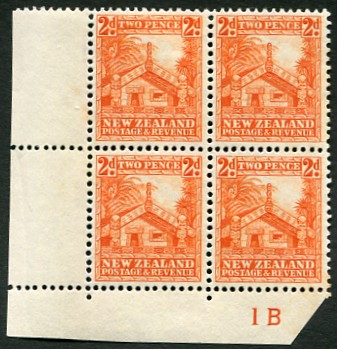
Single-watermarked paper
The first issue was on single watermarked paper. All plates had 480 impressions in two panes of 240 with the issued sheets having 240 stamps in 10 rows of 24. Pane A was the upper pane and B the lower pane. The double sheets were separated before they were perforated.
Stamps on single watermarked paper were from panes numbered: 1A and 1B.
The comb perforation 14x13½ could either be from left to right (L to R), in which the perforations would continue through the right selvedge, or right to left (R to L) in which case the perforations would continue through the left selvedge. A recent study tabulates the known variations with the different plates [1] and the known 2d examples with single watermark are all perforated R to L.
Stamps on single watermarked paper were not overprinted Official.
Multi-watermarked fine paper

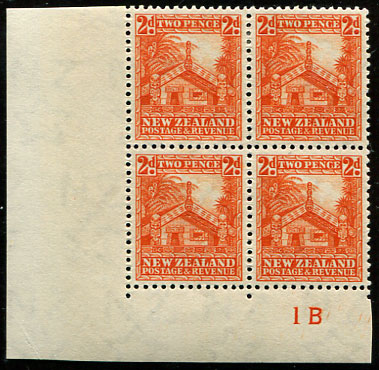
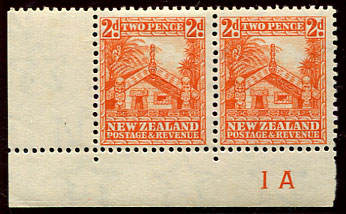
Stamps on multiple watermarked paper were issued in March 1936 on sheets with pane numbers 1A and 1B.
Sheets printed from these panes exist perforated both L to R and R to L and these examples clearly show the difference.
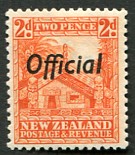
The two plate blocks of 4 above were perforated L to R, while the plate pair to the left was perforated R to L and so the perforations extend through the left margin.
2d stamps overprinted Official were first issued in January 1938.
They were on fine multiple watermarked paper and must have been from panes 1A and 1B.
There were later issues overprinted Official from all the other plates.
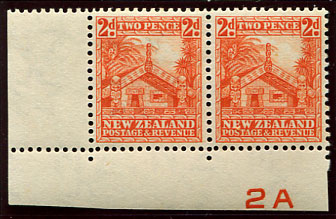
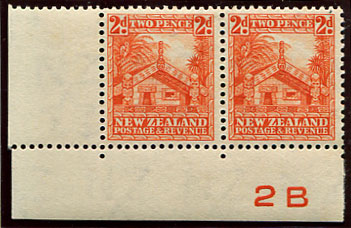
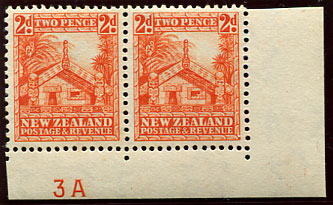
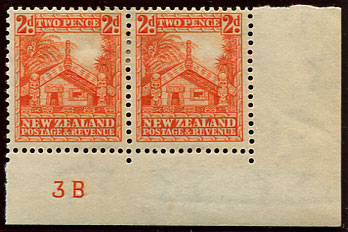

Stamps from sheets with pane numbers 2A, 2B, 3A and 3B were issued in October 1938. Sheets from panes 2A and 2B exist perforated both L to R and R to L while those from panes 3A and 3B are only known perforated R to L [1]. All the above examples are R to L.
Plate 3 differs from all the others in that the plate numbers are under the second last stamp in the bottom selvedge while in all the other examples they are under the second stamp.
Sheets with pane numbers 4A and 4B were issued in October 1941.
They are only known perforated L to R [1].
Blitz perforations
In December 1940, De La Rue's printing works were badly damaged. Unlike some other values, the 2d value continued to be printed by De La Rue, but sheets printed from panes 2A and 2B were sent to other firms for perforation.
Coarse paper
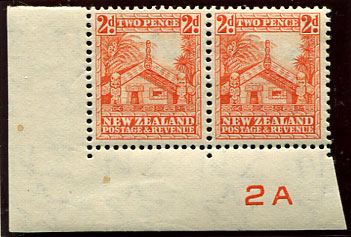
From January 1942, the stamps were issued on coarse paper. The pane numbers were 2A, 2B, 3A, 3B, 4A and 4B.
Initially, the sheets continued to be perforated L to R or R to L as in this example of plate 2A which is perforated L to R. Note the single hole in the bottom selvedge as in all the previous examples.
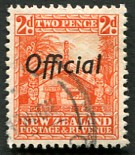
A new comb head was then introduced where the stamps were perforated either from top to bottom (T to B) or from bottom to top (B to T).
Examples from plate 3 are shown below. With sheets perforated T to B, the perforations continue into the bottom selvedge. Sheets perforated B to T have a single perforation hole in the side selvedge which distinguishes them from panes 3A or 3B perforated R to L which have a single perforation hole in the bottom selvedge.
Stamps on coarse paper and overprinted Official were first issued in March 1942.
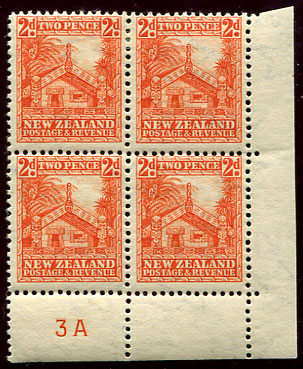
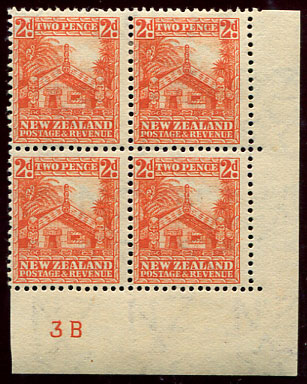
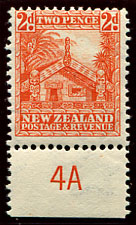
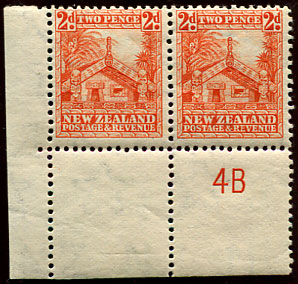
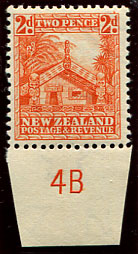
Panes 4A and 4B are both in the T to B form while pane 4B is also shown perforated B to T. It is B to T rather than either L to R or R to L as it does not have a single perforation hole in the bottom selvedge.
The example of pane 4B T to B is listed as not known in [1].
In April 1943, stamps were issed from plate 5. Initially, both panes were numbered 5, but in May 1943 stamps were issued with the two panes distinguished by the letters A and B being scratched on the plate.
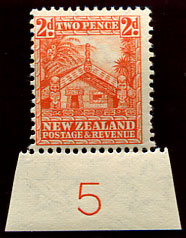

A plate 5 single perforated bottom to top and a block perforated top to bottom is shown.
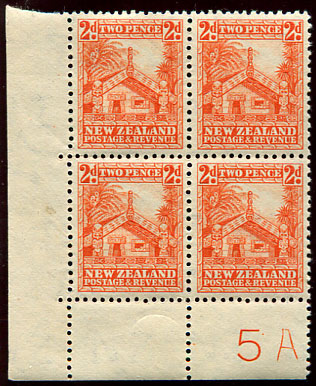

Plate blocks 5A perforated top to bottom and bottom to top are shown.

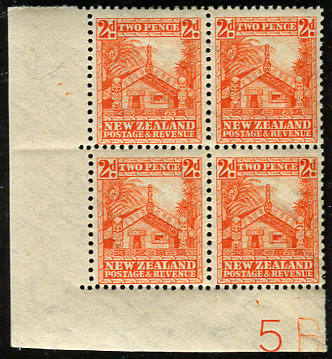
Plate blocks 5B perforated top to bottom and bottom to top are shown.
The 2d was replaced by the George VI definitive in 1947.
The above information is taken from The Postage Stamps of
New Zealand Vol 1, 2 and 4 published by the
Royal Philatelic Society of New Zealand in 1938, 1950 and 1964.
All scans were made by the author.
[1] L Savins, The Engraved 1935 Pictorial Definitive Stamps of New Zealand and
the Directions of their Comb Perforations, The New Zealand Stamp Collector,
vol 89, no 2, pp 52 - 62, June 2009, published by the
Royal Philatelic Society of New Zealand .